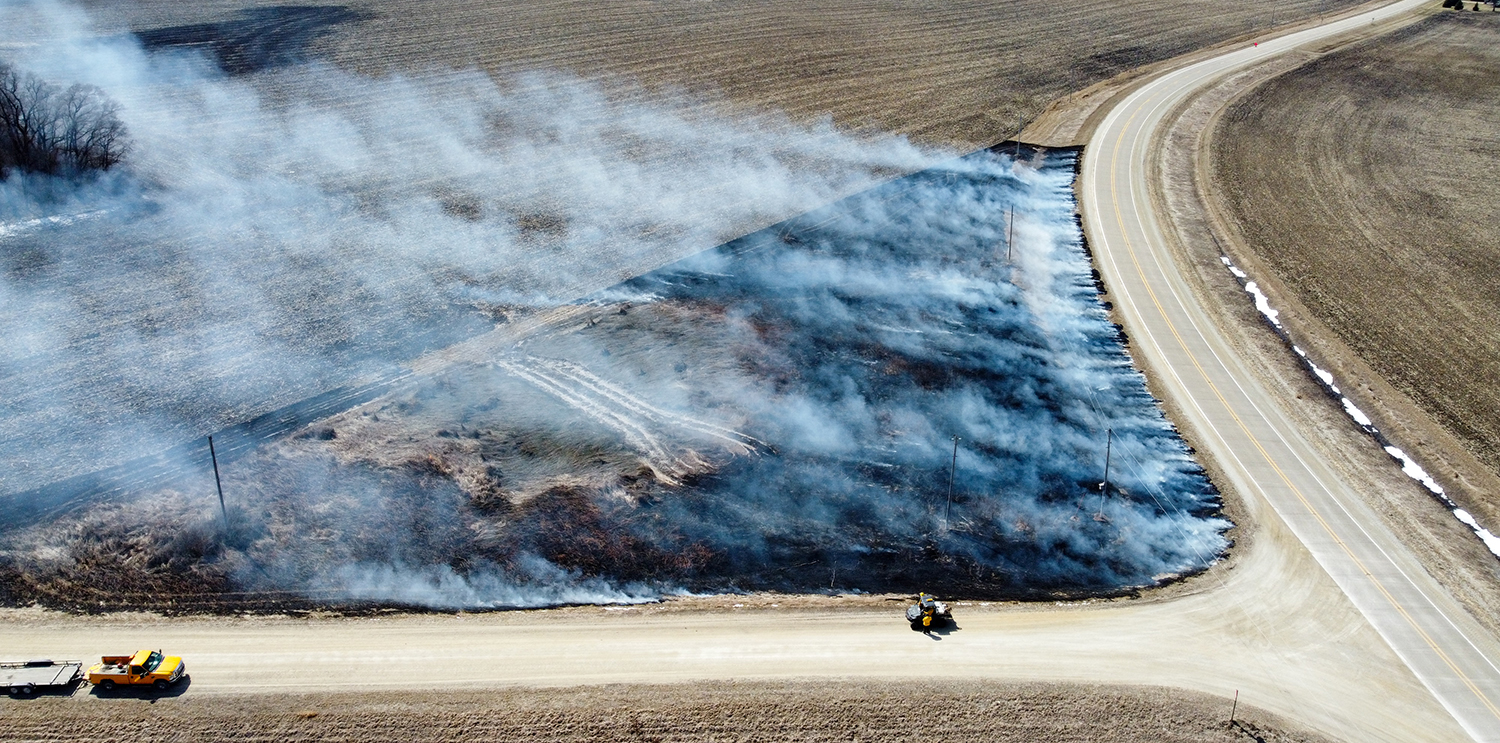Training Requirements
Table of Contents

Training Requirements
Though there are no statewide minimum training requirements for individuals participating in roadside burns, the Iowa Department of Natural Resources (DNR) offers training that provides basic information about executing safe prescribed burns.
The minimum recommended training to participate in a prescribed roadside burn is the Introduction to Wildland Fire series that covers the basics of fire behavior and wildfire firefighting techniques, consisting of the following courses:
- NWCG S-130, Firefighter Training (Wildland) Q0900 - S130
- NWCG L-180, Human Factors in the Wildland Fire Service Q0902 - L180
- NWCG S-190, Introduction to Wildland Fire Behavior Q0901 - S190
These courses, totaling 40 hours, are offered online through the Wildland Fire Learning Portal, maintained by the National Wildfire Coordinating Group’s Wildland Fire Learning Portal Governance Board. An in-person field day is required to receive certification for this training. The Iowa DNR Fire Management Training website includes a calendar with upcoming in-person training days. The website also has an Iowa Annual Fireline Safety Refresher that can be completed online.
Roadside managers and other staff wanting to go beyond the introductory training to add more expertise to the crew conducting prescribed roadside burns can become certified as a Firefighter Type 2 (FFT2). This is also known as “red card” certification, in reference to the card that FFT2s receive, certifying they are qualified to work on wildland fires. For more information on becoming certified, check the Wildland Fire Learning Portal.


